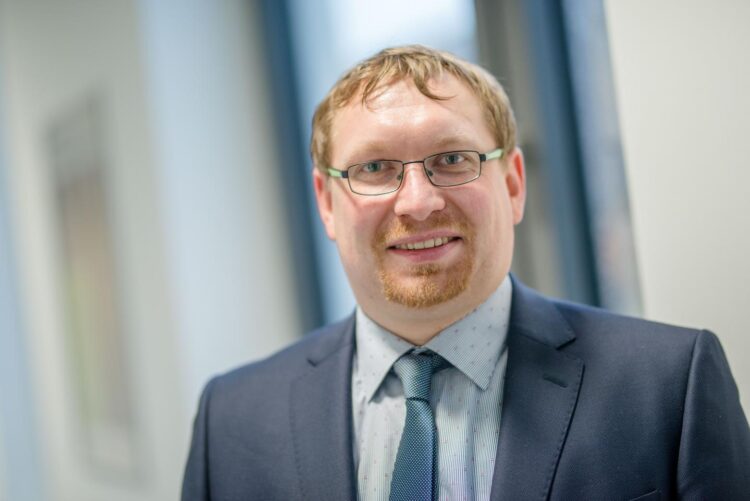Biotechnology

Credit: © RUB, Marquard
How to extract metals from the environment
Microorganisms such as fungi and bacteria as well as plants generate a wide range of chemical substances that are not absolutely necessary for their survival. Such so-called secondary metabolites are usually formed in response to current environmental conditions. They include metal-binding molecules called chelators. The best described group of chelators are the iron-binding siderophores. They are relevant for many metabolic processes, as iron is an essential component of many enzymes and signalling pathways. For example, pathogenic bacteria use siderophores to extract iron from their host for their metabolism. The host might then suffer from iron deficiency. But siderophores are also used by bacteria living in soil that thus get access to iron and, as a result, gain an advantage over other organisms in the same habitat. In addition to iron-specific chelators, there are a number of others for various metals and metalloids such as zinc, vanadium, molybdenum or even uranium oxides.
Many potential applications
“Such chelators have many potential applications,” explains Dirk Tischler. “They can be used, for example, to remediate floors, selectively extract or separate raw materials, or in biosensorics or medicine.” In medical applications, siderophores are used to treat iron overload in the body, a disorder known as “iron storage disease”.
Over the last few years, his research group, together with other teams, has identified further strains that form chelators and described new structures. They have also successfully deciphered the genetic information for the formation of these substances and introduced them into easy-to-handle organisms such as Escherichia coli bacteria. These bacteria then serve as producers of the required natural substances or of modified substances. “This is how we can create semi-artificial compounds,” says Dirk Tischler.
Biosynthesis of precursors
In the review article, he describes the different natural chelators and their ability to bind metals and metalloids and explores current and potential future applications. “At present, we are using the knowledge we’ve gained so far to create artificial biosynthetic pathways that enable us to generate and characterise precursors of siderophores,” concludes Tischler. These precursors will subsequently be chemically modified in order to gain access to new drug classes.
###
Funding
The research was partially funded by Dechema within the framework of the Max Buchner scholarship MBFSt 3646 and the Ministry of Innovation, Science and Research in North Rhine-Westphalia (PtJ-TRI/1141ng006).
Original publication
Marika Hofmann, Gerardo Retamal-Morales, Dirk Tischler: Metal binding ability of microbial natural metal chelators and potential applications, in: Natural Product Reports, 2020, DOI: 10.1039/C9NP00058E
Artur Maier, Sarah Wansel, Alvaro Gomez Baraibar, Carolin Mu?gge, Dirk Tischler: N-Hydroxydiamine – vielseitige Bausteine fu?r Wirkstoffsynthesen, in: Biospektrum 2020, DOI: 10.1007/s12268-020-1374-6
Press contact
Prof. Dr. Dirk Tischler?
Research group Microbial Biotechnology?
Faculty of Biology and Biotechnology?
Ruhr-Universität Bochum?
Germany
Phone: +49 234 32 22656?
Email: [email protected]
Media Contact
Prof. Dr. Dirk Tischler
[email protected]
Original Source
https:/
Related Journal Article
http://dx.





